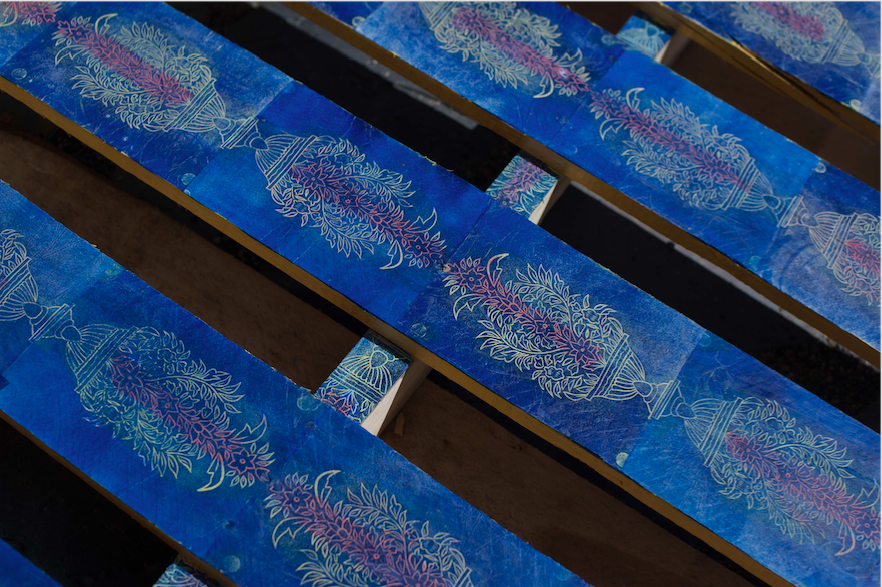
Soheila Esfahani, “Cultured Pallet: Indian Chest at farmhouse II,” detail, mixed media on wooden pallet, 2018
Billions are said to be in global circulation. In the United States alone, five hundred million are manufactured every year. They are everywhere, including inside and outside of our large retail shops. Their ubiquity and number, however, do not guarantee their visibility. Few of us look at, let alone think about the wooden shipping pallets at the heart of global trade and therefore of our daily lives. For Canadian artist Soheila Esfahani, the pallet constitutes both the material and conceptual node of her current body of work aptly called Cultured Pallets. What better symbol could there be, after all, of the circulation and migration of goods, people, technologies and ideas characterizing the global, contemporary world?
“What I like the most about Cultured Pallets is its nomadic aspect,” Soheila tells me. “I generally work with pallets found in the vicinity of where I work and exhibit. This makes the concept, process and product all equally portable,” she adds. “I also think it’s uncanny how the pallet mimics culture in that, although it surrounds us and dwells in every location on any continent, we don’t usually pay attention to it.”
Soheila recuperates found shipping pallets only to etch and paint them with decorative designs, often hailing from her native Iran. Cultured Pallet: FMC (2015), for example, displays an all-over blue and turquoise design that evokes Persian manuscript illumination, while the blue mandala-like arabesques on Cultured Pallet: Annie’s Garden take inspiration from the dazzling dome of a famous monument in the Iranian city of Isfahan. The pallets, however, obviously change the motifs’ purpose, meaning and aesthetic. While the works represent the artist and her peregrinations, they do not nostalgically hearken back to the past. Instead they probe the process of cultural transfer and translation, in its radical sense of “carrying across.” The artist, who chose to move to Canada as a young woman, has found in the pallet the ideal object to both map the experience of living across cultures and frame culture as a dynamic, complex process rather than a static, hermetic reality. Esfahani’s Cultured Pallets not only broaches cultural translation across space, but also across time as the historical designs question what happens to cultural markers in an age of global capitalism and the commodification of culture.
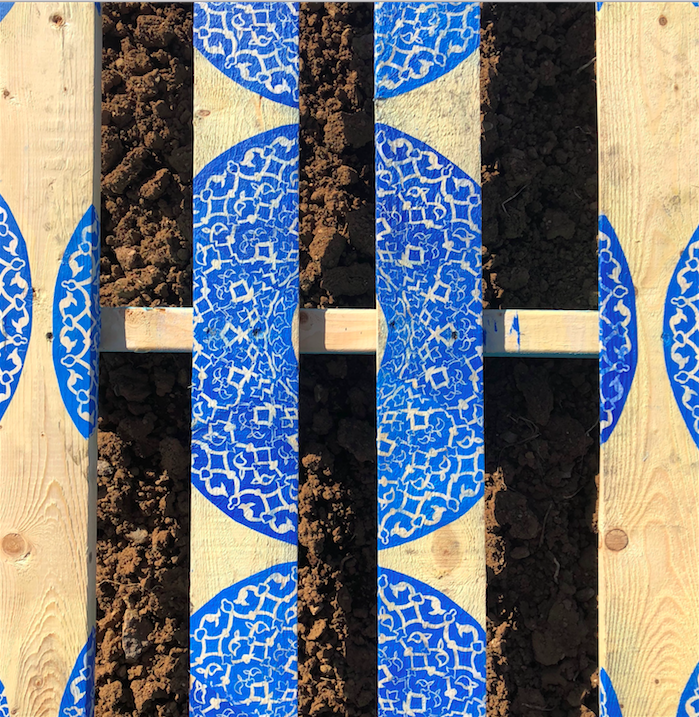
Soheila Esfahani, “Cultured Pallet: Annie’s Garden,” detail, 2018, mixed media on wooden pallet
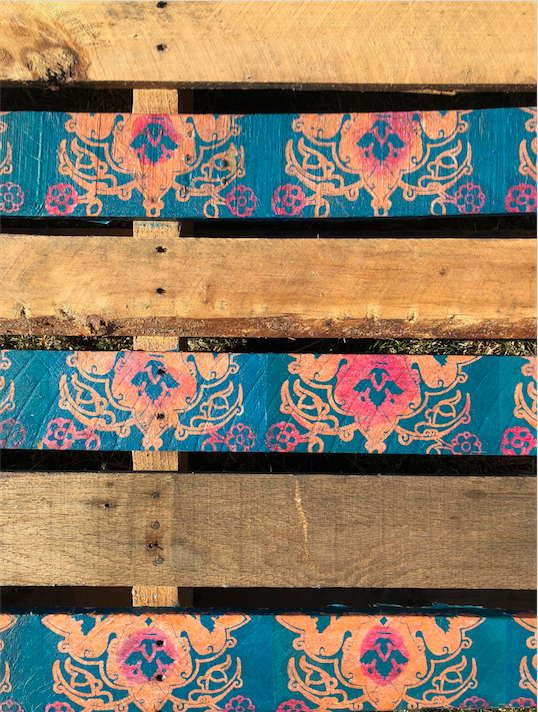
Soheila Esfahani, “Cultured Pallet: Scot’s Bay,” detail, mixed media on wooden pallet, 2018.
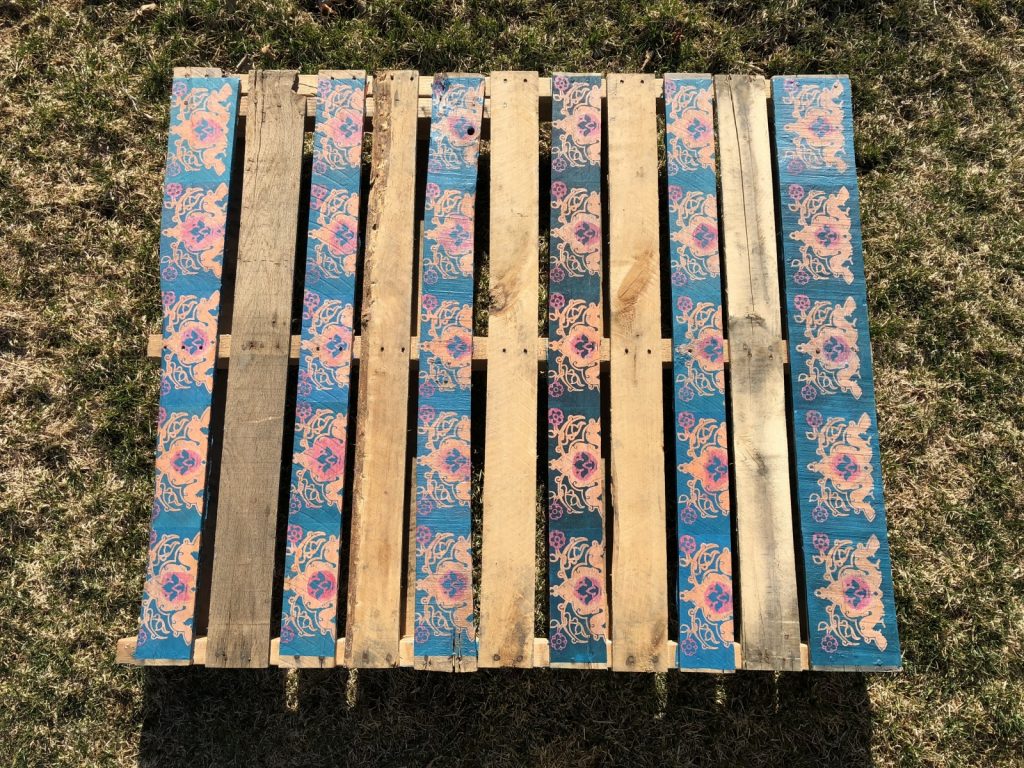
Soheila Esfahani, “Cultured Pallet: Scot’s Bay,” detail, mixed media on wooden pallet, 2018.
Although based in Waterloo, Ontario, Soheila’s art has brought the artist twice out east. Last year, she participated in a group show at Halifax’s Canadian Museum of Immigration at Pier 21, and this summer, she had a solo show—Interstice (April 15-June 20, 2018) —at the Ross Creek Centre for the Arts, where she also engaged in a three-week residency and offered a workshop on Middle Eastern calligraphy. Soheila loved the setting and staff and enjoyed meeting fellow travelling or local artists as well as exploring the region’s lush landscapes and culture. “What struck me about Ross Creek Centre was that it seemed to embody all that Canada stands for, to the point that if someone wants to get an idea about our country, I think: “Send them to Ross Creek,” she recalls. “Multiculturalism is usually associated with large, urban centers, but here is an all-inclusive art center in rural Nova Scotia where people with different roots assemble to share and learn from one another. It was a beautiful experience for me, a living example that inclusion happens naturally.”
Two of the pieces produced and exhibited at Ross Creek witness, in particular, the residency’s impact on the artist’s work, thereby shedding light on Soheila’s modus operandi. Having discovered a chest made in India—its exact origins unknown—at the Ross Creek farmhouse, Soheila reproduced its vase and flower motif in her latest works: Cultured Pallet: Indian Chest at Farmhouse I (2018) and Cultured Pallet: Indian Chest at Farmhouse II (2018). That Soheila felt moved by the object’s handsome design evinces how her work possesses a personal, intimate dimension linked to life experience and encounters. It also demonstrates the artist’s fascination with the relationship between place, decorated artifacts and memory. Soheila often refers to “portable culture,” by which she means the small decorative objects that we carry with us when we move to another country or that we acquire as mementos when visiting countries abroad. Like the concept of the pallet, that of portable culture suggests the importance of visual and material culture to subjective and cultural memory, as it equally establishes culture as a site of ongoing transcultural connections.
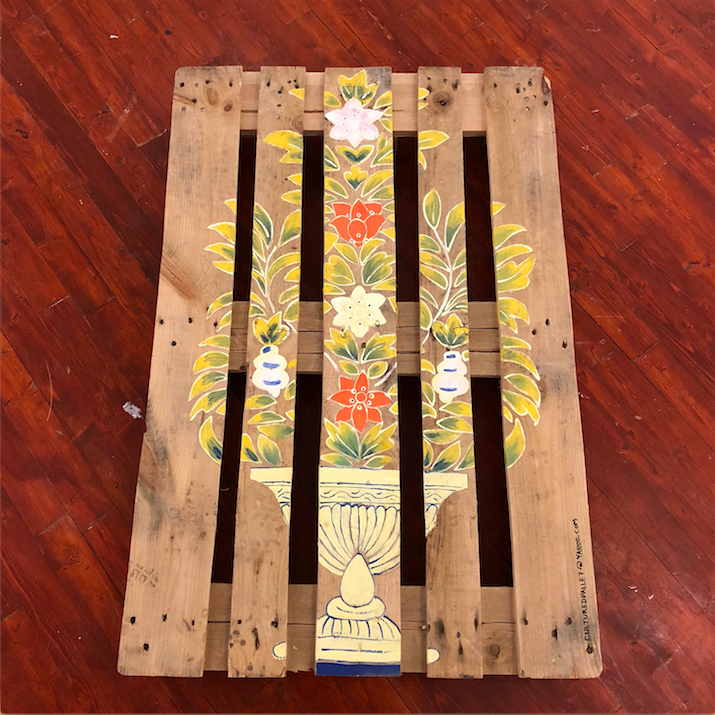
Soheila Esfahani, “Cultured Pallet: Indian Chest at farmhouse I,” acrylic on wooden pallet, 2018
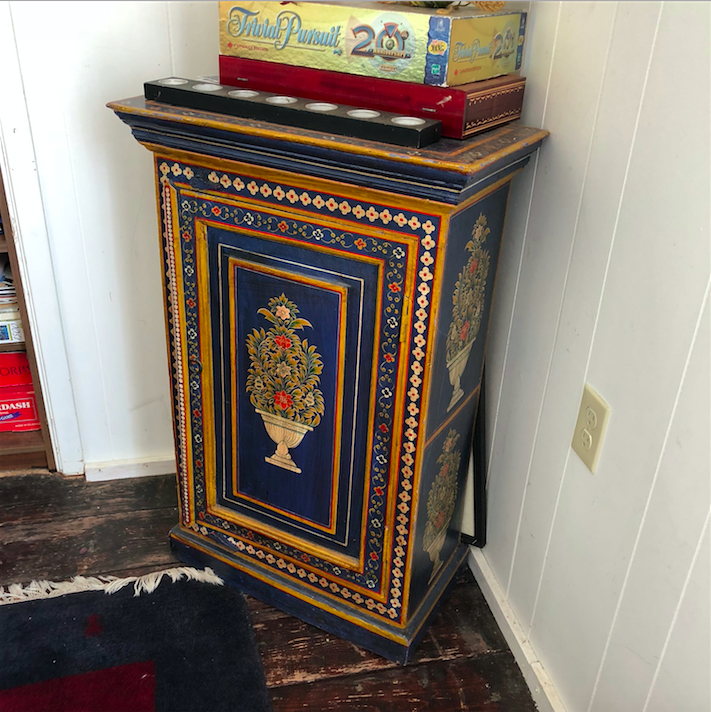
The found chest—made in India—that Soheila Esfahani used as inspiration in “Cultured Pallets”
The chest acts as a physical metaphor, reflecting the artist’s existential location: “The Indian chest was a kind of anchoring point for me,” explains Soheila. “Part of the place, it was not aesthetically connected with any of the other furniture in the farmhouse and its designs were close to the Persian one that filled my childhood. I wondered what story it would tell if it could speak. How did it get there?”
Cultured Pallets remind us that we all possess multiple identities and that these are constantly shaped and reshaped by the people, events, and even objects in our lives. The shipping pallet forms embody the movement and exchange integral to life and cultures, especially as some of Soheila Esfahani’s Cultured Pallets are left in situ ready to continue their journeys; stamped with her email address, they encourage communication and point to further, endless possible ley lines amongst us. While she “has only had a few people contact her via the email address,” Soheila is confident that creating a thousand pallet works will make “this inter-connective aspect of Cultured Pallets go viral.”
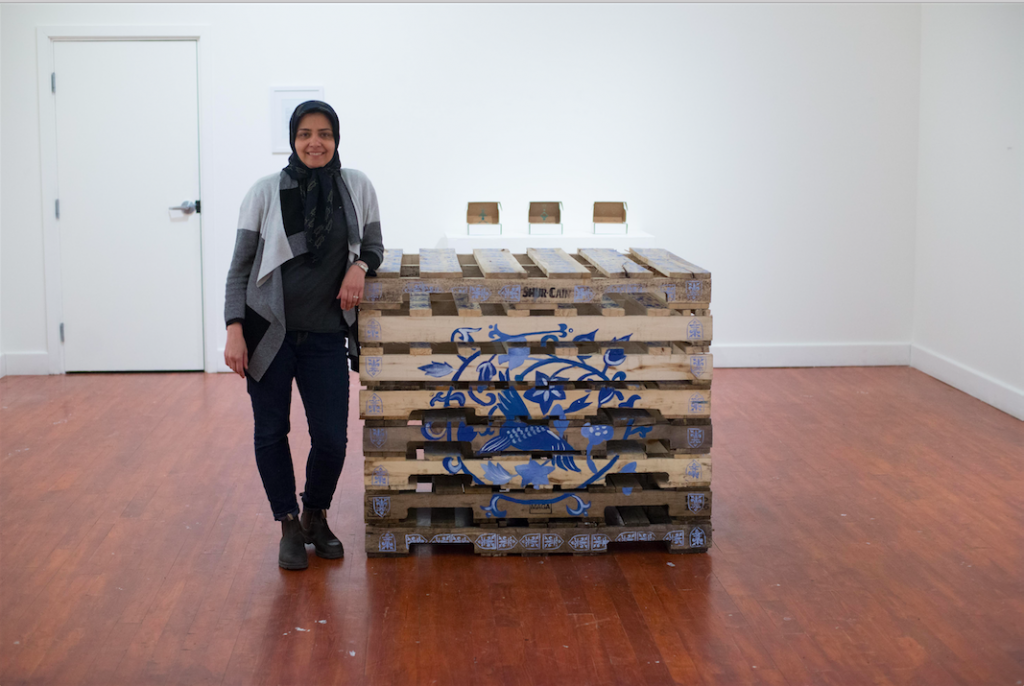
Above: Soheila Esfahani
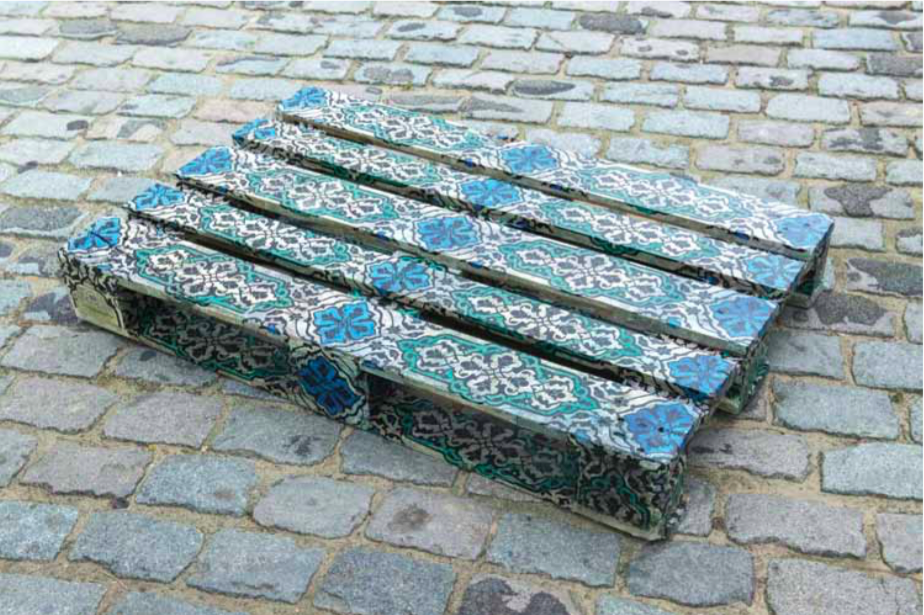
Soheila Esfahani, Cultured Pallet: FMC, 2015, mixed media on wooden pallet, 25.4 cm x 78.7 cm x 1.2 m.


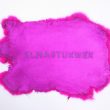













Leave a Reply